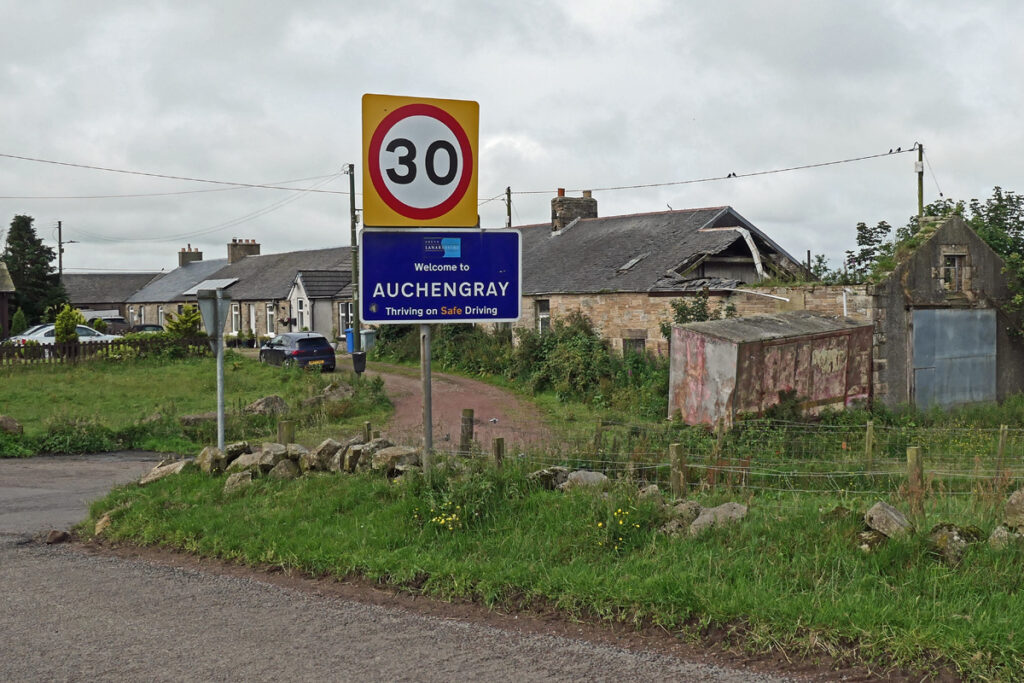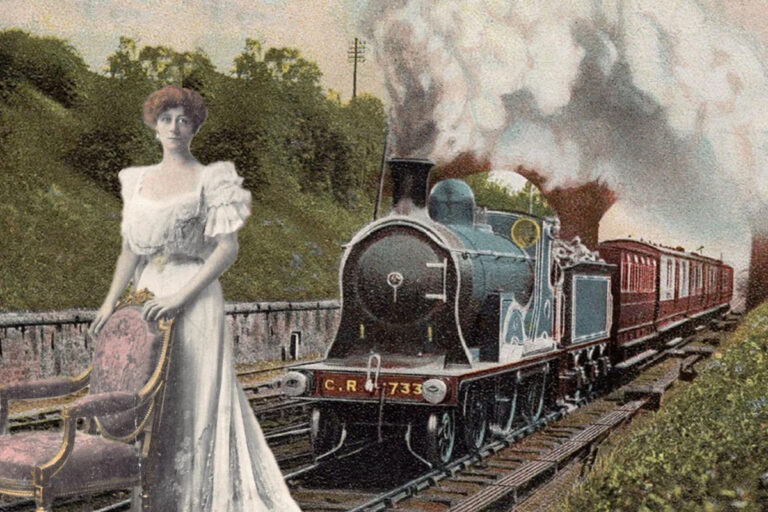In a recent post we shared an image of local lads posing proudly with their stock-car outside the “garage” at Auchengray. Although the snap was taken not so long ago, the scene has sadly changed a great deal since then. The roof of the old building that was then used as a garage and workshop has now collapsed, and vegetation encroaches through broken windows. A heavy steel sheet guillotine still sits outside the building whilst peering through windows reveals other tools decaying inside.

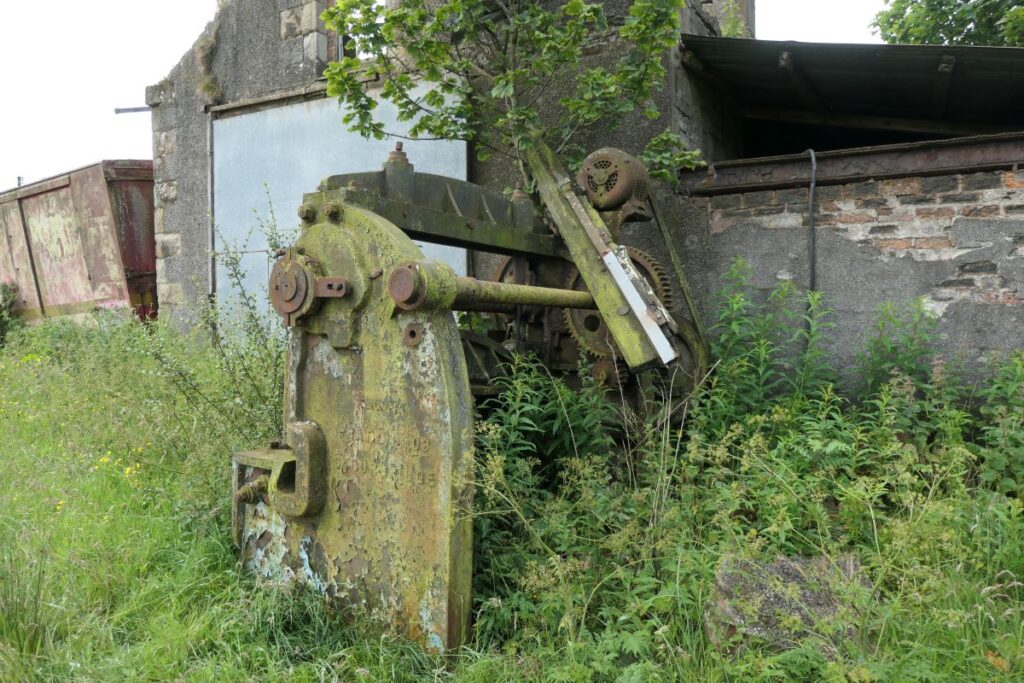

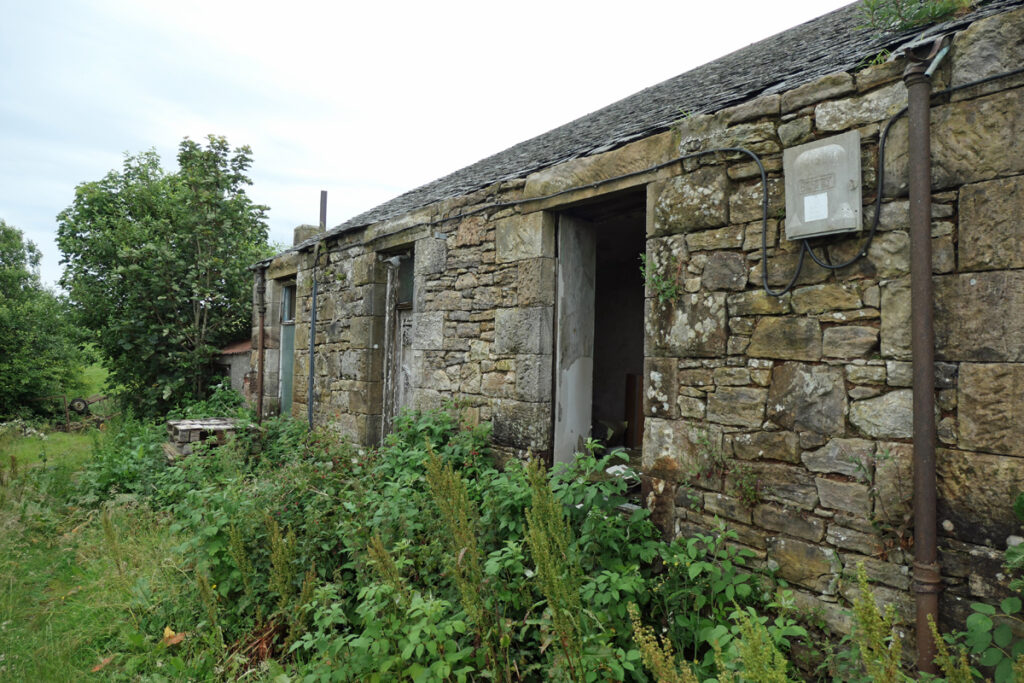

Stock car champions of earlier days, and views of the derelict “garage” in July 2025
The derelict garage lies at the northern end of the row of ten or so houses that form the heart of the hamlet of Auchengray, and seems to have been built in about 1870, on the site of an earlier cluster of old thatched cottages. At the southern end of the row lay the Auchengray smithy, already in operation when the row was built.
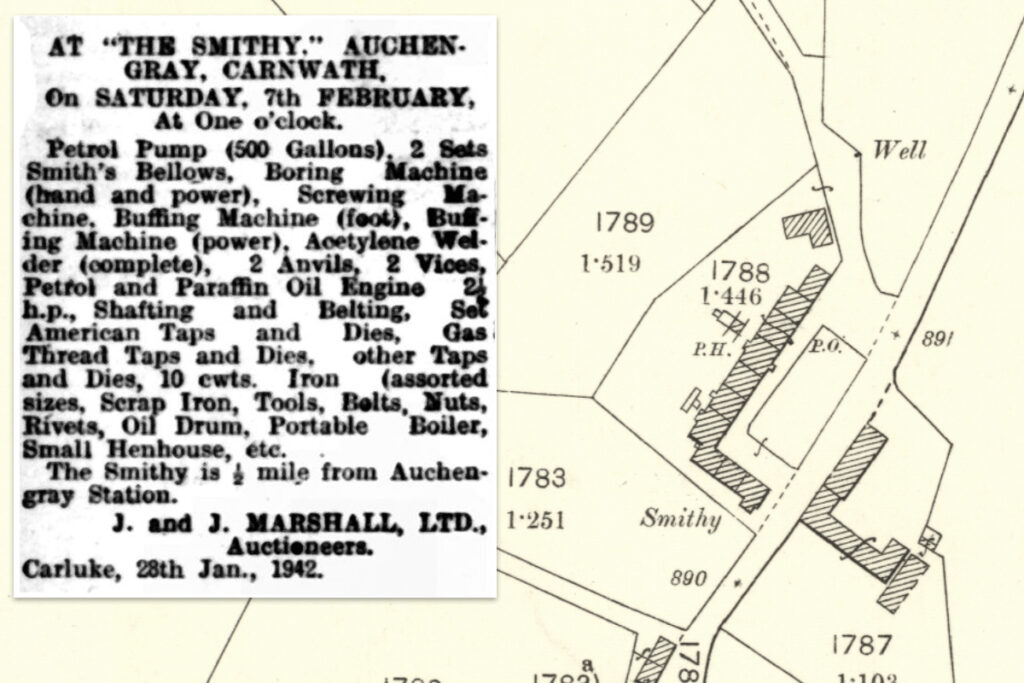
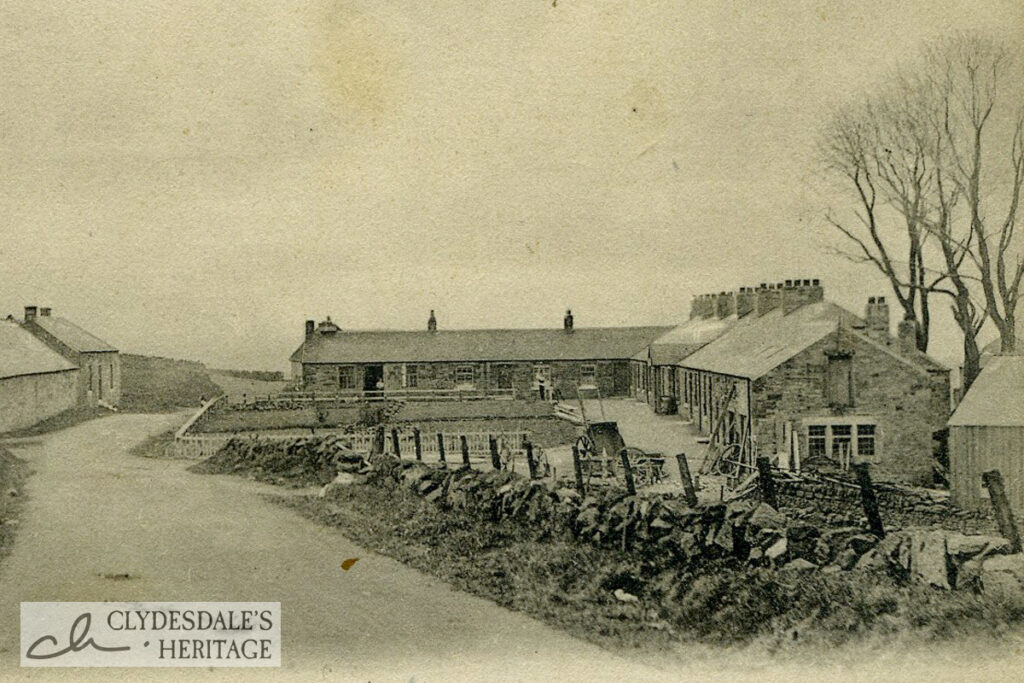
The village blacksmith will have been at the centre of the local farming community, making and repairing tools and machinery, and fitting shoes to working horses. The warmth of the forge would have made it a popular meeting place, particularly in colder weather. On one dark January night in 1913, the Forth Amateur Dramatic Society were returning home from a performance in Tarbrax when they were caught in a snowstorm and were forced to seek sanctuary at the smithy. James Bell, the blacksmith, helpfully kindled a rousing fire in the forge to warm up the male members of the company while Mrs Bell awoke kindly neighbours who provided beds for the ladies. James Bell served as village blacksmith from the 1880’s until the second world war. Part of the smithy now lies empty and roofless, and an ancient petrol pump close by saw its last customer many years ago.

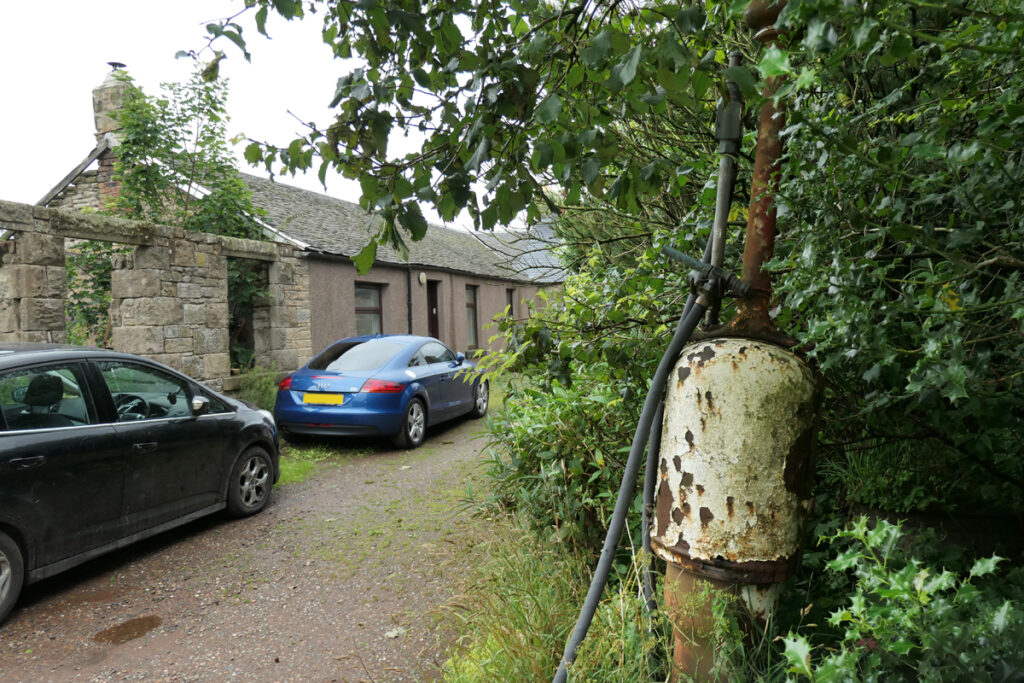
The tumbledown smithy, and a long-disused petrol pump outside it.
The Auchengray Inn lay at the centre of the row of cottages, for many years was the domain of Walter Murray, “innkeeper and vintner”, who also served as the village’s grocer. Questions were sometimes raised as to why such a small community should be granted licence to run a public house, but it seems that the droothy coal miners of Haywood and the thirsty shale workers of Tarbrax were often happy to trudge for miles on pay-day in order to enjoy Auchengray’s hospitality. Another of the houses in the row served as the village post office, where (in 1911) William Inglis was able to combine his postal duties with those of a boot and shoe manufacturer.
The derelict garage at the north end of the row was, between the 1880’s and 1930’s, the workshop of George Lindsay, wrights and joiners. Lindsay’s were general carpenters, concerned with building projects, coffin-making, or the repair or manufacture of farm carts. Early postcards show a good variety of horse-drawn vehicles awaiting the cartwrights’ attention.

Auchengray has always been an industrious and hospitable little place, and it’s sad that the buildings at either end of the row now lie derelict. It’s sadder still that you can no longer enjoy a cool pint in the friendly, intimate little bar of the Auchengray Inn.
Robin Chesters 14/07/25

